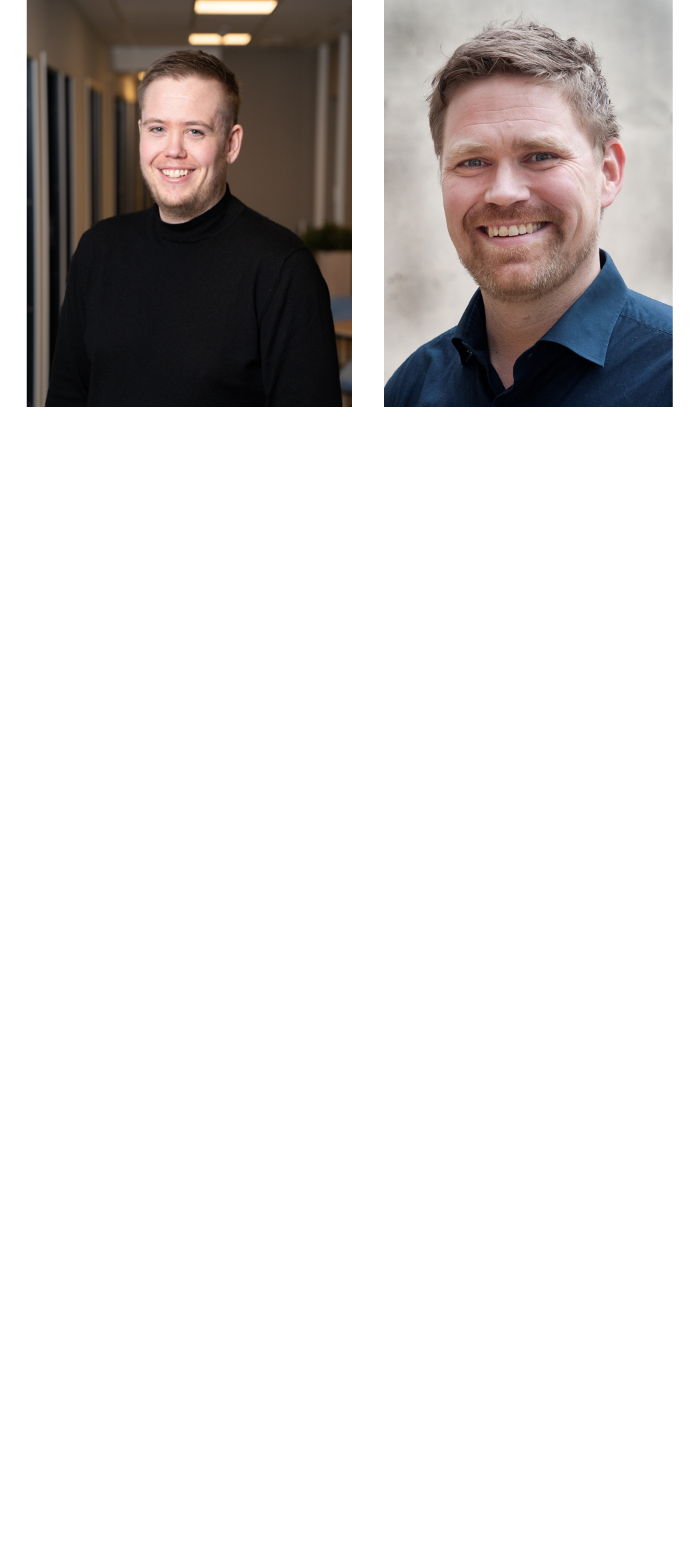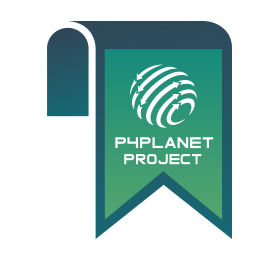We interviewed Fredrik Lundestad, Mo Industripark AS (MIP) and Per Anders Eidem, SINTEF Helgeland.
Can you briefly describe your roles at MIP and SINTEF Helgeland?
Fredrik Lundestad: Mo Industripark AS (MIP) is the property and infrastructure company in the industrial park. We manage properties, infrastructure, facilities and equipment in the industrial park and market the industrial park as an establishment location. MIP also works at the local, regional and national level to ensure that the industry has the best possible framework conditions.
MIP started in 1946 as a single, state-owned enterprise, which was eventually divided into several companies. Now we have around 110 companies within the industry park.
I work as Business Developer at Mo Industripark AS. I joined MIP more than one year ago and I am based in the MIP project department. Besides undertaking business development work, I work on several research projects focussing on improving energy efficiency, pollution reduction, or other sustainability issues (e.g. Indigo [1], several others). We also have internal projects at MIP and work on projects for our customers.
Per Anders Eidem: I am a Senior Researcher at SINTEF Helgeland. SINTEF is one of Europe’s largest research organizations. I work as advisor for our customers and actively participate in research projects as well as internal projects at MIP. We are enablers for the implementation of CE / IS and I-US solutions. Our role has developed over time. At the beginning, MIP was the main driver for these activities. They established a local research office with SINTEF. MIP and SINTEF work closely together – I also lead the MIP Sustainability Program. Efforts to achieve green solutions are organized under the Umbrella of MIP Sustainability. We have a variety of activities aimed at promoting sustainability. The initiative was established in 2015. Over the last year, there has been a mix of looking for opportunities and also giving advice on say, strategy or way forward; executing studies when it comes to finding opportunities within the existing business of MIP. The goal of MIP is to be a world class green industrial park. We investigate how MIP can get there, how MIP can maintain the frontrunner position MIP currently has in Norway. In Europe, there are other good examples. To some extent, we act as facilitators, too. MIP is not an owner of (large) side streams. MIP is a land and infrastructure company. They own, amongst other things, pipes and roads and rent them out to their tenants. SINTEF Helgeland helps MIP and companies located in MIPwith their research questions and mappings and find solutions to their problems (regarding I(U)S and CE).
MIP and SINTEF are also part of the Arctic Cluster Team (ACT), which focusses on process and mineral industries and aims to be a driving force for the sustainable transition of Norway [2].
Can you talk a bit about who your stakeholders are?
Fredrik Lundestad: MIP is a stakeholder itself – we own our own grid company. Rana Industry Terminal is another key stakeholder – they operate the harbour. Our key businesses are also important stakeholders. I work with customer relations and establish new business opportunities. If we see an interesting company, we screen them to see if they could be a good fit for our park. Further stakeholders are clusters and national funding sources, such as Innovation Norway [3]. Furthermore, the EU as funding body is an important stakeholder.
Who is mainly providing ideas /impulses for new developments which lead to real practical implementation of I(U)S / CE?
Per Anders Eidem: Our researchers at SINTEF help with the identification of side streams. Also, the businesses themselves take initiative, and regulatory frameworks push for changes, such as CO2 emission reductions. We follow a mixed approach – there are several different ways of going forward.
Which challenges are the actors in your region facing with regards to I(U)S/CE collaborations?
Fredrik Lundestad: There are two main showstoppers. The first is the risk associated with new technologies. The larger the investment, the heavier the change (and the greater the risk). The second showstopper is related to how the I(U)S/CE fits with the existing business model. Implementing IS which fits into linear business models is easy. The technology risk is typically smaller when compared to the risk associated with the business model, usually related to players being dependent on each other. That can be a major hindrance to implementing I(U)S/CE solutions. Moving into a new area of business and establishing a new value chain can be brought along by support schemes available in Europe today. The schemes are, however, not comparable to the support available in the US today, where the inflation reduction act has made the country very attractive for green investments.
To give a practical example: For some years, there has been quite some Carbon Capture Utilization and Storage (CCUS) activity amongst the industry players in our region of Nola [4]. Industrialization of such technology is considered an important contributor to reducing CO2 emissions and delivering on the global sustainability goals. A study was conducted to identify point sources, and to assess viable technologies for capturing CO2. The CO2 from two companies was caught and combined in a capture plant. But now we see new developments with either storage or utilization. The political landscape regarding CCUS and the regulations are challenging, since they undergo rapid changes. Furthermore, financing the expensive CCU processes is challenging, and it is not yet clear how the financing schemes will further develop. Goals are set but is not yet clear how we will achieve them. At MIP, we are looking into options to convert CO2 emissions from different sources into synthetic fuels which can replace fossil-based fuels, thereby contributing to a reduction in the use of fossil fuels. Currently, the synthetic fuels produced in this way still count as fossil fuels. We are investigating whether we need to store the CO2, but we are currently waiting for the development of regulatory frameworks and finance options.
What is MIP looking for in the collaboration with the Community of Practice?
Fredrik Lundestad: We see the collaboration as an opportunity to achieve our sustainability goals at MIP. We aim to be a world class industry park. So, we are planning to investigate the H4C COP database of I(U)S/CE solutions provided through the Knowledge Platform to get ideas for what to do with our side streams. We would like to use it for inspiration, but also for networking in certain areas. Furthermore, we would like to encourage our tenants in the park to get engaged with the H4C COP. Therefore, we tell them about options to get connected with the COP or to include them in projects. We also see the H4C COP as an option for promoting MIP.
What is MIP particularly successful with / willing to share with the community? What are you most proud of?
Fredrik Lundestad: We are most successful with district heating. Mo Fjernvarme AS (distric heating) is a subsidiary of Mo Industripark AS. MIP owns 60% of the heating company. Annually, enough energy is produced to heat up 6,000 single family houses.
We are proud of our tenants and our history. The companies established in the Mo Industrial Park have a long tradition of developing effective measures, reinforced by the fact that these activities take place within the industrial cluster. CO gas and slag are our most important side streams. CO-gas is currently used to preheat steel before further processed with a rolling mill. All our players are working on the energy efficiency of their operations. One of them is aiming to be a fossil free mining company. They are a leader in this field, and they run their operations very well [5] . We are also a facilitator for the optimization of logistics, thereby replacing 20k trucks per year through our conveyor belt connecting the harbour with the industrial area.
[1]https://www.linkedin.com/posts/sintef-helgeland_indigo-indigo-sustainability-activity-7125117445001928704-ydZT/
[2] https://arcticclusterteam.no/en/about-the-cluster/m; accessed 2nd January 2024
[3] Innovation Norway helps Norwegian companies to grow sustainably and increase exports by providing access to competence, capital and networks. Source: https://en.innovasjonnorge.no/, accessed 2nd January 2024.
[4] See also https://www.mip.no/en/worlds-first-carbon-capture-pilot-for-smelters-inaugurated-in-mo-industrial-park/ accessed 2nd January 2024.
[5] See https://ranagruber.no/media/the-first-iron-ore-mine-in-the-world-aiming-to-cut-all-carbon-emissions/ accessed 2nd January 2024
Featured images: Fredrik Lundestad, Mo Industripark, Credit: Benjamin Strøm Bøen / Mo Industripark, and Per Anders Eidem, SINTEF Helgeland


